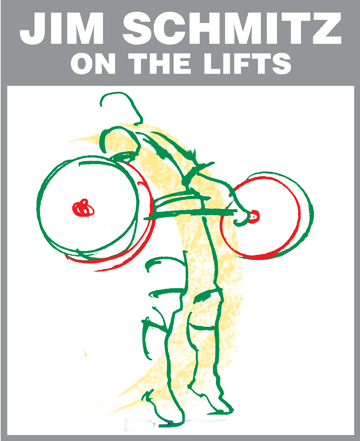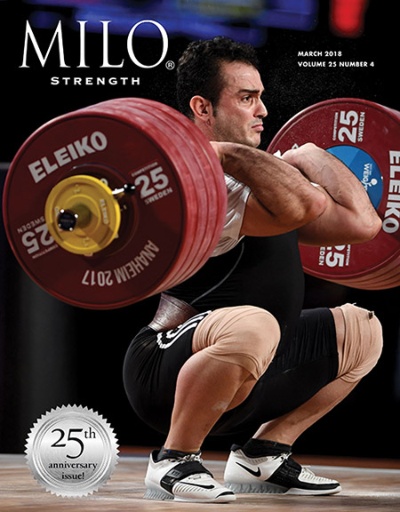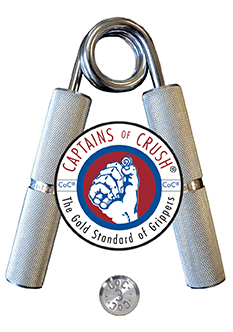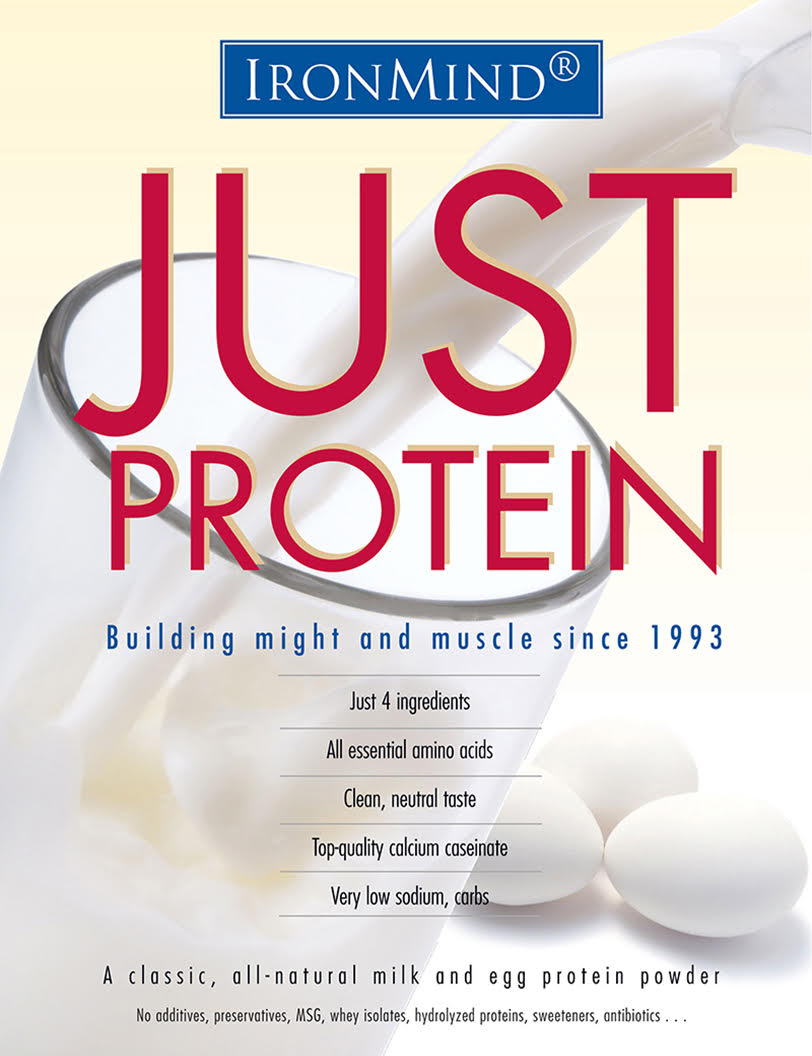
U.S. Olympic Weightlifting Team Coach 1980, 1988 & 1992 Author of Olympic-style Weightlifting for Beginner & Intermediate Weightlifters Manual and DVD
Last month’s “Schmitz on the Lifts” was on the military press (MP); this month I would like to discuss two lifts that are part of the progression in learning to lift heavy weights overhead. After you’ve mastered the MP it is time to learn the push press (PP), and once you’ve learned the PP then it’s on to push jerk, also known as the power jerk (PJ).
The set-up for the push press is the same for the military press—the bar is resting on your deltoids and clavicles, with a shoulder-width or slightly wider grip, and your feet are hip- to shoulder-width apart. From the standing-erect position with your knees locked—you can take the bar from a rack or you can power clean it—you bend or dip your knees 2 to 4 inches straight down (don’t lean or bend forward or backward), with your elbows out in front of you and your hips back behind you (in the same position as the catch or receiving position for the power clean) and chest up. From here you drive up with your thighs and hips and simultaneously push the bar straight upward around your chin and back over your ears. Ideally, your elbows and knees extend to the locked position at the same time. Your feet do not move, but it is okay to come up on your toes when you finish the leg drive. I prefer beginners not to move their feet at all, but to learn to coordinate the leg drive and the arm lockout efficiently and consistently. The completed position is with the bar directly over your ears, arms and legs extended, torso erect. You then lower the bar down to your deltoids and clavicles, receiving the bar by bending the knees slightly to absorb the impact on your clavicles and deltoids. Then stand up, get set and repeat.
You set up for the push jerk exactly like the MP and the PP. For the PJ you also bend or dip your knees 2 to 4 inches with your elbows out front and hips out back and chest up. You then drive up with your legs and hips and simultaneously push the bar up and around your face. However, as the bar goes past your head, you re-bend your knees 2 to 4 inches as your arms lock out directly over your head and ears. You are now in a quarter squat with the bar locked out directly over your head. From here, stand up with your legs and arms extended. During the upward leg drive it is good to go up on your toes; in fact, it is necessary. With beginners, I don’t like to have them move their feet other than going up on their toes, because I don’t want them popping their feet way out to the side or fore and aft. Once they have mastered the PJ technique pretty well, it is okay to pop the feet out to the side a few inches, but not too wide as that is not a stable position and could lead to injury of the groin or knees.
There is an interesting phenomenon with teaching the PP and PJ: most people have quite a problem on re-bending the knees for the PP. The PP seems like a simple, basic exercise—you just dip, drive, press. But some people really have to work hard to get that movement correct. It just seems their knees want to re-bend on their own and it requires real concentration and a coach stressing with each rep, “Don’t re-bend the knees!” Be aware of this problem and correct it with the first workout. Once you get the PP down pat, which might take several workouts, then you learn the PJ. Most people have little problem learning the PJ if and when they have mastered the PP. Remember, the PP is dip, drive, press; the PJ is dip, drive, dip, stand up.
The PP and PJ really build your deltoids and triceps and overall upper-body strength and power. Another real benefit of the PP and PJ is that they teach you which way is UP! What I mean by this is so many lifters want to push the bar out front where they can see it, or they want to look up at the bar. This is not efficient—you won’t lift as much weight this way and you may injure yourself, especially your lower back, if you look up at the bar. You must stress pushing the bar straight up and finishing by standing at attention with the bar directly over your ears, shoulders, hips, knees, and ankles, and looking straight ahead; otherwise a trip to the chiropractor may be in your future. It is important to hold each rep overhead for at least one second to control the weight and stabilize your body; on your last rep of each set, hold the weight for 3 to 5 seconds to develop your muscular and physical stability and control of the weight. This is important for maximum physical development as well as balance. You must always keep pushing UP—the weight won’t stay there on its own.
For sets and reps, I like 3 to 5 reps for 3 to 5 sets for the PP, and 2 to 3 reps for 3 to 5 sets for the PJ. I also like to do these lifts toward the end of the workout.
Once you have mastered the PP and PJ individually, combine them in the same set. For example, do 2 PPs followed by 2 PJs, or 1 and 1, or 2 and 1, or 1 and 2. Whatever combination you feel benefits you best.
You can power clean for your PPs and PJs or take the bar off the rack—again, whatever you think is the best for you.
The most common question asked is, “Where should my elbows be?” The answer is, “It depends on you.” What I mean by that is if the bar is resting correctly on the clavicles and deltoids, then ideally your elbows should be down at about nipple height and in front of you, not at your sides, but this depends on your arm proportions (forearm and upper-arm lengths) and wrist and shoulder flexibility. Ultimately, it’s what feels best for you for pushing upward most efficiently and with the most power.
The second most common question asked is, “How much more should I push jerk than push press?” I’ve come up with the following ratios as a guideline, not absolute fact. If you MP 80 kg, then you should PP about 90 kg and PJ 100 kg and split jerk 110 kg. Again, this all depends on the individual—that’s why there are world and Olympic champions who are push jerkers, such as Pyrros Dimas and Kaki Kakiasvilis, both three-time Olympic gold medalists.
There are several reasons I like the PP and PJ, besides teaching you which way is UP and developing powerful shoulders and arms: 1) they teach you how to drive the bar up using your hips, thighs, calves, ankles and feet; 2) you learn the correct dip depth and hip position for you; and 3) they teach you how to catch or receive the bar on your clavicles and deltoids when lowering the bar for your reps. Lowering the bar under control and bending your knees to absorb the impact so as not to bang, bruise, and injure your clavicles, deltoids, or upper or lower back is very important for anyone doing overhead lifts.
Remember—straight UP, stay tight, and keep pushing.

















